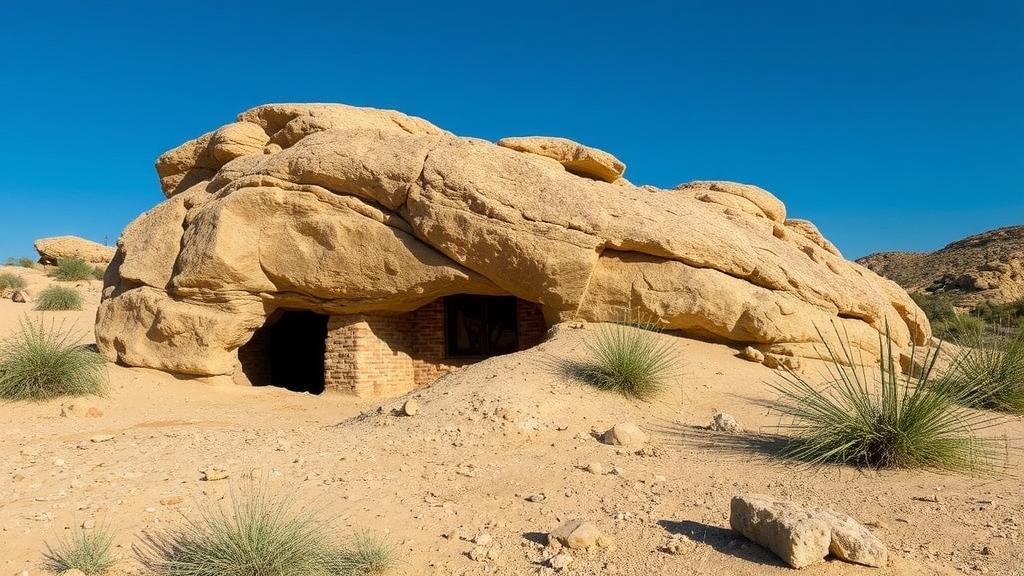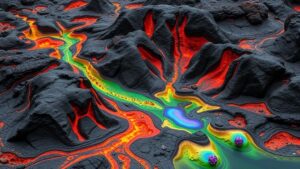Exploring Desert Rock Shelters for Prehistoric Human Artifacts
Exploring Desert Rock Shelters for Prehistoric Human Artifacts
The exploration of desert rock shelters represents a critical avenue for understanding prehistoric human life. These natural formations not only provide shelter but also serve as canvases for ancient art and repositories for artifacts. This article examines key findings from various desert regions, emphasizing their significance in uncovering aspects of human behavior, migration, and adaptation.
The Importance of Desert Rock Shelters
Desert rock shelters are invaluable to archeological research for several reasons:
- Preservation: The arid climate of deserts slows the decay of organic material, preserving artifacts that would otherwise deteriorate.
- Ecological Insight: These shelters provide insights into the ecosystems that prehistoric humans interacted with, allowing researchers to gather data on ancient flora and fauna.
- Social Structure: The use of rock shelters sheds light on social structures and communal living among prehistoric populations.
Key Archaeological Sites
Several significant archaeological sites around the world have documented human activity in desert rock shelters. Notably, the following sites have provided a wealth of artifacts:
- The Cave of the Hands, Argentina: This site features handprints and intricate rock art dating back to 13,000 years ago, illustrating early hunter-gatherer communities.
- Pictures and Petroglyphs at Little Petroglyph Canyon, California, USA: The canyon houses over 5,000 petroglyphs, contributing to the understanding of the cultural expressions of the Indigenous peoples of the region.
- Blombos Cave, South Africa: Dating back to 75,000 years ago, this site has revealed not only artifacts but also evidence of early symbolic thinking, indicated by engraved ochre.
Methodologies in Rock Shelter Excavation
The excavation of desert rock shelters typically employs several methodologies:
- Stratigraphic Excavation: Archeologists excavate in layers to understand the chronological sequence of human activity.
- Micro-Excavation Techniques: These precise methods allow for the careful retrieval of small artifacts and provide insights into daily life.
- Remote Sensing Technologies: Techniques such as ground-penetrating radar (GPR) can identify subsurface structures without invasive digging.
Findings and Interpretations
Research indicates that prehistoric humans utilized rock shelters not just for habitation but also for ritualistic purposes. For example, the discovery of ceremonial artifacts alongside utilitarian items in rock shelters suggests a complex interaction between the sacred and the mundane.
In arid environments like the Southwestern United States, evidence shows that these shelters were strategically located near water sources, indicating an understanding of environmental cues. This behavior reflects how early humans adapted their lifestyles to the resources available in harsh conditions, as supported by the studies conducted by researchers such as H. John Stein (2011) in his publication Archaeology of the Desert Southwest.
Challenges and Considerations
Despite the wealth of information unearthed from desert rock shelters, several challenges persist:
- Climate Change: Erosion and climate changes threaten the preservation of these sites, necessitating immediate conservation efforts.
- Vandalism and Looting: Increasing tourism without adequate regulation can lead to vandalism of sensitive archaeological sites.
- Ethical Considerations: Engaging with Indigenous communities regarding the interpretation and preservation of sacred sites is critical for respectful research practices.
Conclusion
Desert rock shelters serve as a crucial link to understanding the lives of prehistoric humans. As archaeological techniques continue to advance, so too does our ability to glean insights from these ancient shelters. It is imperative that preservation efforts are prioritized to protect these invaluable windows into our shared past.
Actionable takeaways for researchers include enhancing community engagement for ethical research practices, utilizing cutting-edge technology for excavation, and advocating for the protection of these sites against external threats.


